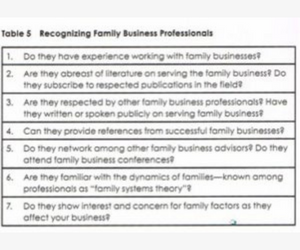Fingernail Infections
FINGERNAIL INFECTIONS AFFECT WOMEN MORE THAN MEN
In contrast to toenail infections, fingernail infections, especially those caused by candida, impact more women than men. This happens because often women’s jobs as housekeepers or dishwashers involve “wet work”. That is, work where they’re putting their hands in water. This increases their vulnerability to infection.
Women may also experience a bacterial fingernail infection, especially due to pseudomonas species. Damage to the cuticle during a manicure procedure, that is, the cuticle is pushed back too aggressively, or the cuticle clipping involves anything beyond removing dead skin, will predispose women to these infections. Bacterial or fungal infections can develop where the nail and the skin meet at the base or the sides of the finger. In a healthy fingernail, there’s a seal between the nail and the surrounding skin. When there are cuts, even microscopic ones, or small separations between the nail and nail bed, or the nail and the cuticle, pathogens can enter and infect the nail.
FINGERNAIL INFECTIONS ARE NOT JUST ONE DISEASE
Dermatophyte fungi are the most common cause of toenail fungus. Various medications are available; however, many are cost-prohibitive, or associated with adverse effects that require monitoring of liver enzymes. Furthermore, treatment can be ineffective, especially if the entire nail plate is dystrophic at the time therapy is initiated. In addition, unless there is pain or recurring cellulitis, or the patient is at increased risk for morbidity associated with complications from recurring tinea pedis, it is not medically imperative to treat toenail fungus.
Fingernail infections can be a little more complicated: 30-50% of cases of fingernail fungus are caused by candida, not dermatophyte fungi. If the infection develops in a distal to proximal fashion, affecting the nail from the very tip of the finger, the most likely organism is a dermatophyte. However, should the nail infection follow an episode of acute paronychia (infection of the nail fold, also known as the cuticle), then the more likely culprit is candida. Recurring acute, or persistent, chronic, paronychia can make this type of nail infection more problematic than dermatophyte onychomycosis.
A good clinical outcome, that is a normal nail, depends on treating the right organism with the right drugs. Cultures are necessary to determine which pathogen to treat. Treating the right pathogen is particularly important, given the side effects of oral medications and the fact that some fungi are more susceptible to certain medications than they are to others.
RETURNING TO A NORMAL NAIL DEPENDS ON TREATING THE INFECTION EARLY
The less the nail plate is damaged, the higher the cure rate. Returning to a normal nail also depends on treating the condition before the nail matrix is damaged. A badly damaged nail matrix will not make a normal nail.
STEPS FOR HEALTHY FINGERNAILS
People whose jobs require frequent or prolonged soaking in water should wear gloves. For those who have manicures, the cuticles should be treated gently. The cuticles should not be pushed back aggressively, and cracking and tearing should be avoided. Moisturizing the cuticles first is a good idea. Creams and ointments do a better job of moisturizing than most lotions.
Creams and ointments have a greater proportion of oil in contrast to lotions. Most lotions have a higher proportion of water and can be drying. When trimming the cuticles, clip only the dead skin. In addition, good nutrition is essential for healthy nails and a multi-vitamin with essential minerals including zinc, selenium and calcium may be desirable. Longitudinal ridges that develop on fingernails as we grow older cannot be prevented. These ridges are a normal part of aging. Much the same way that graying hair is a normal part of aging.
Search Articles
Latest Articles
Investment Follows Trust: How Will Ukraine Rebuild Post-War?
https://www.realclearmarkets.com/2024/03/07/investment_follows_trust_how_will_ukraine_rebuild_post-war_1016592.html Publication – realclearmarkets.com
Visiting Ukraine | Mitzi Perdue & Clare Lopez (TPC #1,426)
Visiting Ukraine | Mitzi Perdue & Clare Lopez (TPC #1,426)Watch The Episode About The Episode Clare Lopez and she served in the CIA for 20 years. Spotify: https://open.spotify.com/episode/7BGdjFF6qciRTeHqDG2jPk
A working version of the movie «BUCHA» was shown in eight US cities.
https://uazmi.com/news/post/e48a15b130a86711905a551a945faee3 Publication – uazmi.com
mRNA Paper Retraction | Nathaniel Mead (TPC #1,425)
mRNA Paper Retraction | Nathaniel Mead (TPC #1,425)Watch The Episode About The Episode Spotify: https://open.spotify.com/episode/5sO1yWKHbiNPyGU7q9WM1O
Subscribe to Updates
About Author

Mitzi Perdue is the widow of the poultry magnate, Frank Perdue. She’s the author of How To Make Your Family Business Last and 52 Tips to Combat Human Trafficking. Contact her at www.MitziPerdue.com
All Articles
Choosing Your Family Business Advisors
Choosing Your Family Business AdvisorsKnow when you need to get help. People often ask me the secret of Frank Perdue’s success. He had to do hundreds of things right. He had to be able to see the big picture as well as be detail oriented. But there was something else:...
Substance Abuse and the Family Business
Substance Abuse and the Family Business When it comes to substance abuse, members of a family business are no more immune than the rest of the population. However, as family business advisor Loyd Rawls points out, the consequences can be more dire because serious...
Infertility: Advances In Treatment
Infertility: Advances In TreatmentAge and Infertility are Linked Infertility affects roughly 12% of women. By the time a woman is in her early 40s, her chance of infertility rises to 20%. It’s a particularly difficult problem for the older woman because the quality...
Career Advice for Young People: Shut Up and Listen!
Career Advice for Young People: Shut Up and Listen! Jack Tatem, a former Perdue Vice President, has some serious advice for young people. It’s simple and it can make a big difference in your career. It has to do with listening. The advice is, “Shut up and listen!” He...
Embedding The Family’s Values by Creating an Ethical Will
Embedding The Family’s Values by Creating an Ethical WillOriginal Article written by Mitzi can be found here. Much as I admired Frank Perdue for his success with his family poultry business, I admired him even more for his success as a family man. Since the happiness...
6-Step Solution to Almost Any Problem
6-Step Solution to Almost Any Problem 1. Describe the Problem. Preferably do this in writing. The act of putting the problem into words can clarify your thinking. 2. Write Down the Obstacles. Although I’m a fan of positive thinking, I’m also a fan of research...





